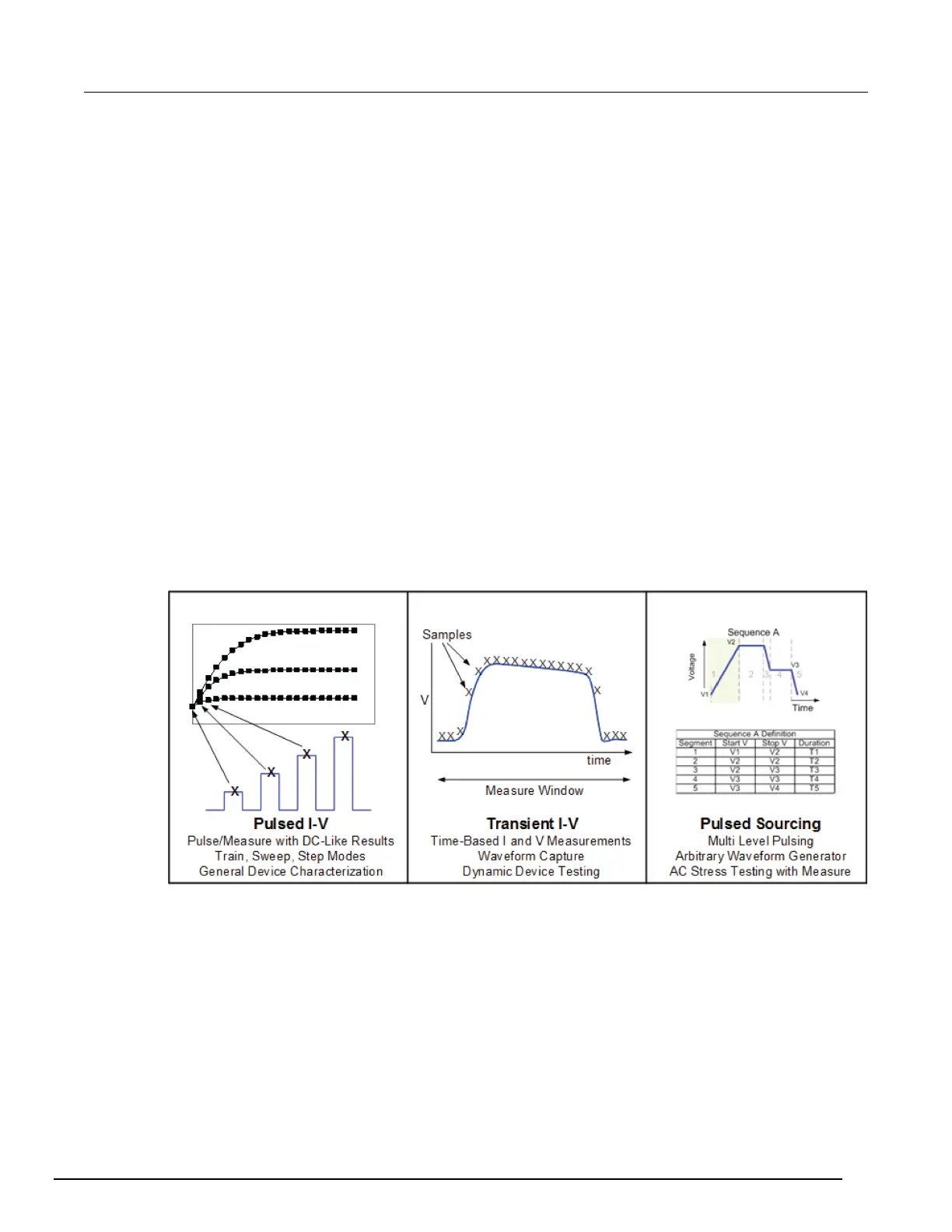4200A-SCS Parameter Analyzer Reference Manual Section 5: Pulse measure and pulse generator units
4200A-901-01 Rev. C / February 2017 5-55
Pulse source-measure concepts
Ultra-fast I-V sourcing and measurement have become increasingly important capabilities for many
technologies, including compound semiconductors, medium-power devices, nonvolatile memory,
microelectromechanical systems (MEMs), nanodevices, solar cells, and CMOS devices. Using pulsed
I-V signals to characterize devices rather than DC signals makes it possible to study or reduce the
effects of self-heating (joule heating) or to minimize current drift or degradation in measurements due
to trapped charge. Transient I-V measurements allow scientists and engineers to capture ultra high-
speed current or voltage waveforms in the time domain or to study dynamic test circuits. Pulsed
sourcing can be used to stress test a device using an AC signal during reliability cycling or in a multi-
level waveform mode to program or erase memory devices. The 4225-PMU Ultra-Fast I-V Module for
the 4200A-SCS supports many of these high speed sourcing and measurement applications.
Ultra-fast I-V tests
You can use the 4225-PMU to do these types of ultra-fast I-V tests:
1. Pulsed I-V
2. Transient I-V
3. Pulsed sourcing
The modes are illustrated in the next figure.
Figure 191: 4200A Ultra-fast I-V tests
"Pulsed I-V" refers to any test with a pulsed source and a corresponding high speed, timed-based
measurement that provides DC-like results. The current, plus voltage measurement, is an average of
readings taken in a predefined measurement window on the pulse. This average of readings is called
the "spot mean." You can define the parameters of the pulse, including the pulse width, duty cycle,
rise and fall times, amplitude, and so on.
"Transient I-V," or waveform capture, is a time-based current, including voltage measurement, that is
typically the capture of a pulsed waveform. A transient test is typically a single pulse waveform that is
used to study time-varying parameters, such as the drain current degradation versus time due to
charge trapping or self-heating. Transient I-V measurements can be made to test a dynamic test
circuit or can be used as a diagnostic tool for choosing the appropriate pulse settings in the pulsed I-V
mode.

